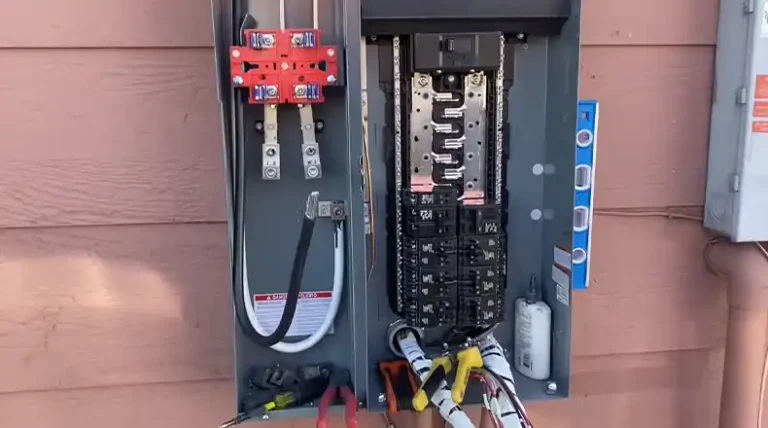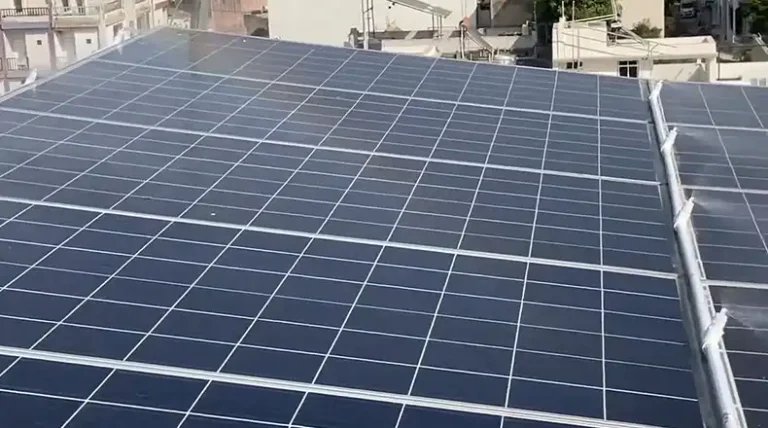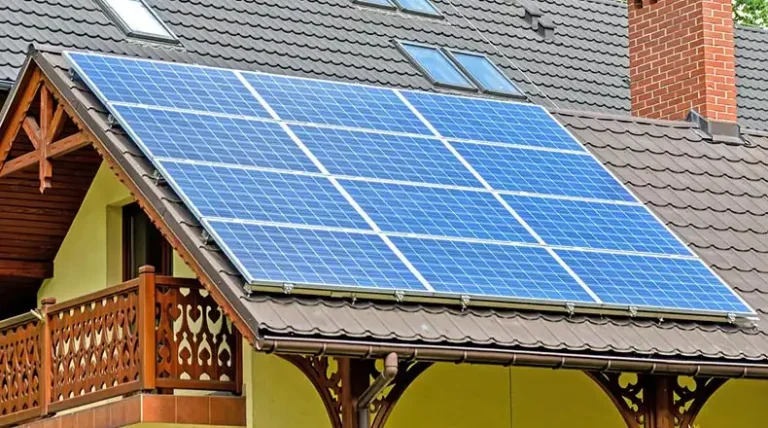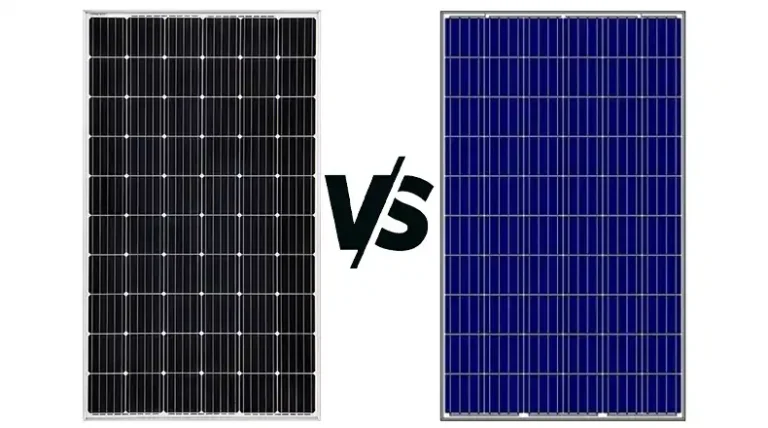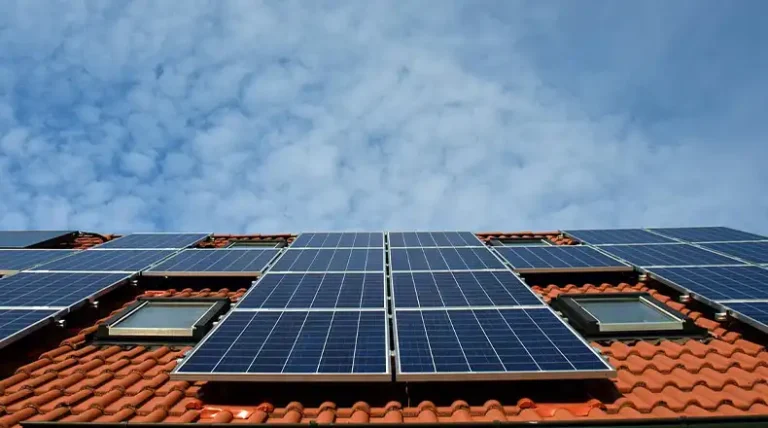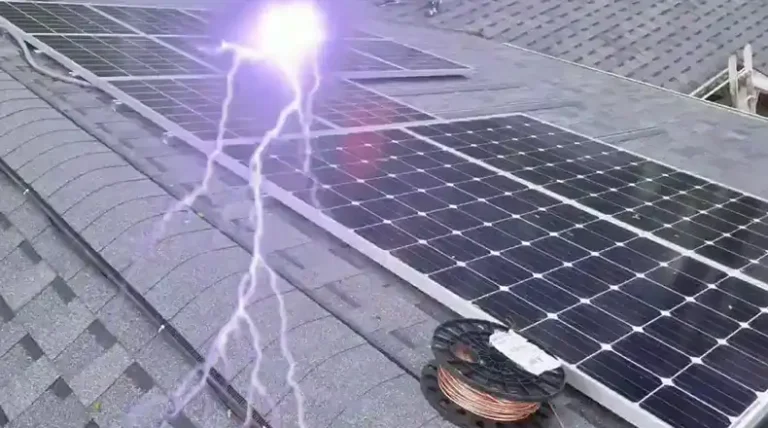How Do You Test A Flexible Solar Panel?
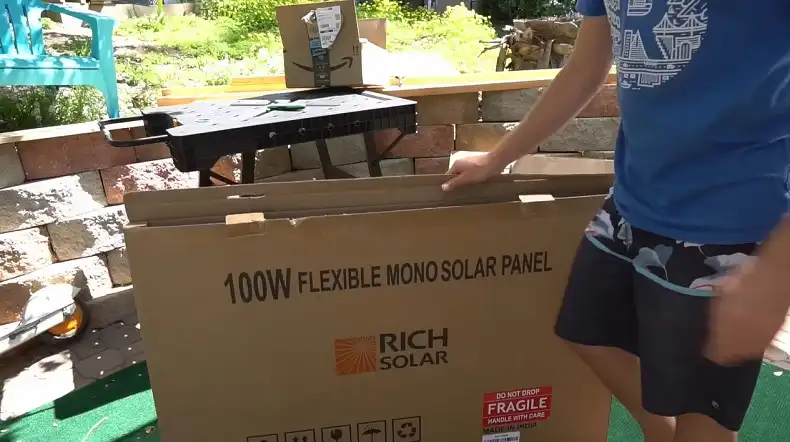
Testing your flexible solar panel is crucial to ensure it is functioning correctly and delivering the expected power output. However, many people make mistakes when testing, leading to inaccurate results and unnecessary frustration.
This guide will walk you through the correct methods to test your flexible solar panel, focusing on two key measurements: Open Circuit Voltage (VOC) and Short Circuit Current (ISC).
Before diving into the testing process, it’s essential to understand that proper sunlight conditions are critical for accurate results.
Testing at night or in poor lighting will give false readings, so always perform these tests in full, bright sunlight for the most reliable performance indication.
By following these steps, you’ll be able to confidently assess your flexible solar panel’s performance and identify any potential issues.
Tools and Requirements for Testing A Flexible Solar Panel
Before you begin testing your flexible solar panel, it’s important to gather the necessary tools and ensure the right conditions. This preparation will help you get accurate readings and avoid potential mistakes.
Multimeter
The most crucial tool for testing your flexible solar panel is a reliable multimeter. This device will allow you to measure both voltage and current.
When selecting a multimeter, ensure it can handle the expected voltage and current ranges of your solar panel. For most residential solar panels, a standard multimeter with a 10A current setting should suffice.
Sunlight Conditions
Proper lighting is absolutely essential for accurate solar panel testing. You’ll want to conduct your tests during the day when there’s plenty of direct sunlight.
Avoid cloudy days, early mornings, or late afternoons when the sun’s intensity is lower. The best results come from testing during midday when the sun is at its highest point.
Disconnecting from Regulators and Batteries
Before testing, it’s crucial to disconnect your flexible solar panel from any charge controllers, regulators, or batteries. This isolation ensures that you’re measuring the panel’s output directly, without any interference from connected devices.
Testing Open Circuit Voltage (VOC)
Open Circuit Voltage (VOC) is the maximum voltage a solar panel can produce when it’s not connected to any load. This measurement gives you a good indication of the panel’s basic functionality.
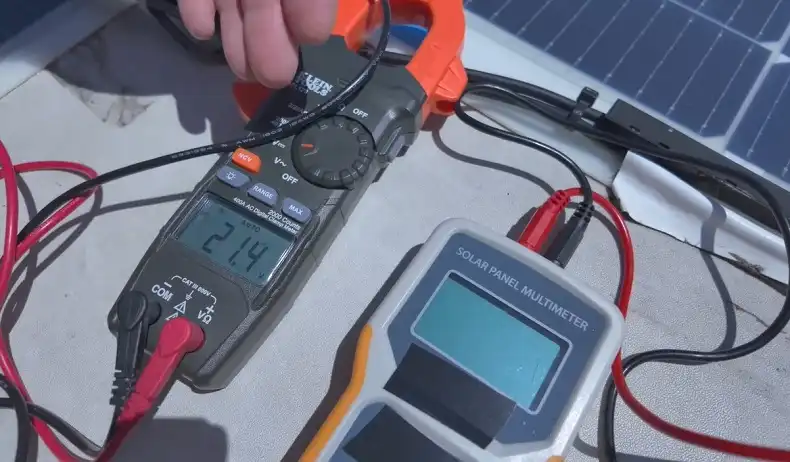
1. Setting Up the Multimeter
To begin, set your multimeter to measure DC voltage. This setting is usually indicated by a “V” symbol with straight lines next to it, as opposed to the wavy lines used for AC voltage.
Make sure you’ve selected a range that can handle the expected voltage of your panel – for a 12V nominal panel, a 20V or 50V setting should work fine.
2. Connecting to the Solar Panel
With your multimeter ready, it’s time to connect it to your solar panel:
- Locate the positive and negative terminals on your flexible solar panel. These are usually clearly marked.
- Connect the red (positive) probe of your multimeter to the positive terminal of the solar panel.
- Connect the black (negative) probe to the negative terminal of the solar panel.
3. Typical Results for 12V and 24V Panels
Once connected, your multimeter should display a reading. Here’s what you can expect:
- For a 12V nominal panel: The VOC should typically fall between 18V to 28V.
- For a 24V nominal panel: Expect a VOC reading between 34V to 56V.
If your readings fall within these ranges, it’s a good indication that your panel is functioning as expected. Significantly lower readings might suggest a problem with the panel or poor sunlight conditions.
Testing Short Circuit Current (ISC)
Short Circuit Current (ISC) is the maximum current a solar panel can produce when the positive and negative terminals are directly connected (short-circuited). This measurement helps you understand the panel’s current output capability.
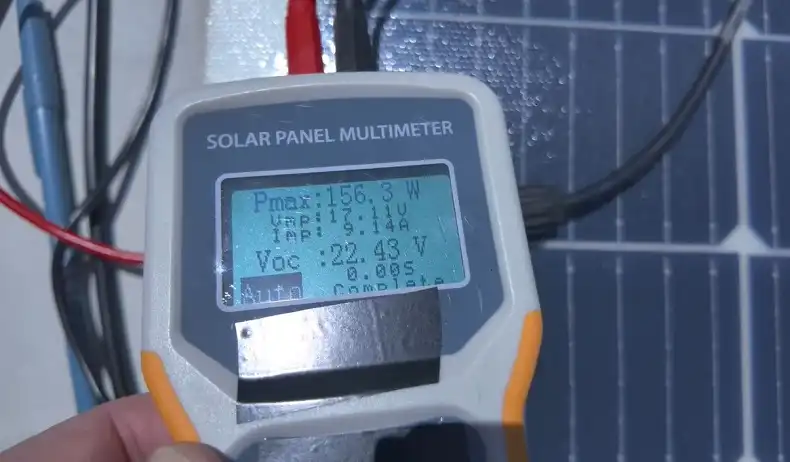
1. Setting Up the Multimeter
For this test, you’ll need to switch your multimeter to measure current. Look for the “A” symbol on your multimeter’s dial. Importantly, ensure that you’ve selected a setting that can handle at least 10A.
Some panels may produce more current, so be prepared to use a multimeter with a higher current rating if necessary.
2. Connecting To The Solar Panel
The connection process for measuring ISC is similar to the VOC test, but with a crucial difference:
- Connect the red probe of your multimeter to the positive terminal of the solar panel.
- Connect the black probe to the negative terminal of the solar panel.
Be cautious when making these connections, as you’re essentially creating a short circuit through your multimeter. Modern multimeters have protection against overcurrent, but it’s still important to be careful.
3. Typical Results
The ISC reading will vary depending on your specific solar panel and the current sunlight conditions. Generally, you should expect to see a current reading that’s close to the manufacturer’s specified ISC for your panel. This value is usually listed on the back of the panel or in its documentation.
If your reading is significantly lower than expected, it could indicate issues with the panel, shading, or less-than-ideal sunlight conditions.
Load Testing the Panel (Optional)
While VOC and ISC tests give you good baseline measurements, a load test can provide additional insight into your panel’s performance under more realistic conditions.
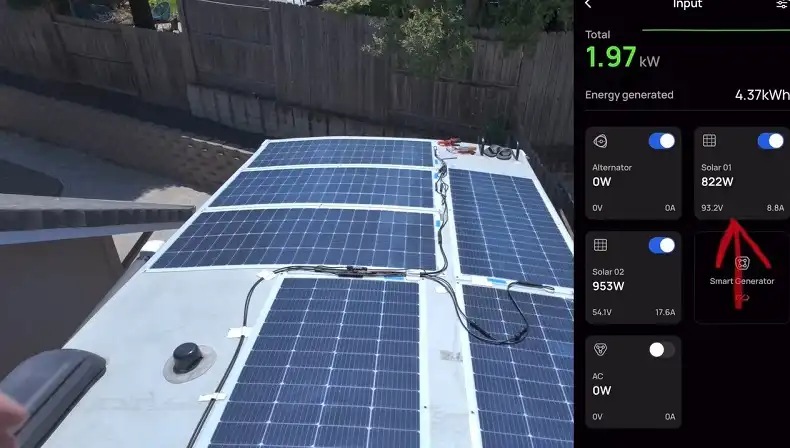
1. Using Incandescent Bulbs
For this test, you’ll need either two 12V 21W incandescent bulbs connected in series or one 24V 55W incandescent bulb. These bulbs act as a load for your solar panel.
2. Connecting and Observing Results
To perform the load test:
- Connect the bulb(s) directly to the positive and negative terminals of your solar panel.
- Observe the brightness of the bulb(s).
If your panel is working correctly and receiving full sunlight, the bulb(s) should illuminate brightly. If the bulb(s) don’t light up or appear dim, it could indicate a problem with the panel or insufficient sunlight.
Final Words
Testing your flexible solar panel doesn’t have to be a daunting task. By following these steps to measure Open Circuit Voltage (VOC) and Short Circuit Current (ISC), you can gain valuable insights into your panel’s performance.
Remember, the key to accurate testing is ensuring you have the right tools, particularly a reliable multimeter, and conducting your tests in optimal sunlight conditions.
Regular testing can help you catch potential issues early, ensuring your solar setup continues to provide efficient and reliable power.
If you consistently get readings that are outside the expected ranges, it may be time to consult with a solar professional or consider replacing your panel.
Frequently Asked Questions
1. How To Check If A Solar Panel Is Working Or Not?
To check if a solar panel is working, measure the open circuit voltage (VOC) with a multimeter. The VOC should match the value specified on the panel’s label, typically around 24.3 volts for many panels. If your measurement is close to this value, the panel is likely functioning correctly.
2. Can You Test A Solar Panel With A Multimeter?
Yes, you can test a solar panel with a multimeter. By setting the multimeter to measure DC voltage, you can check the panel’s open circuit voltage (VOC) and ensure it matches the expected output. This helps determine if the panel is generating power correctly.
3. How Long Should A Flexible Solar Panel Last?
Flexible solar panels typically last between 5 to 10 years. Their lifespan depends on factors like quality, environmental conditions, and how well they are maintained. While they are more portable and lightweight, they generally have a shorter lifespan compared to rigid panels.
4. How Do You Test A Portable Solar Panel Output?
To test the output of a portable solar panel, use a multimeter to measure the voltage and current. Connect the multimeter to the panel’s output terminals and place the panel in direct sunlight.
The multimeter should display the voltage and current being generated, which you can compare with the panel’s specifications.
5. How Do I Find Out If My Solar Panels Are Working Properly?
To determine if your solar panels are working properly, check the system’s output through a monitoring device or app.
You can also manually measure the voltage and current with a multimeter, comparing these values with the panel’s specifications. Regular inspections for physical damage and ensuring all connections are secure can also help ensure proper operation.
6. Can You Test A Solar Panel Without The Sun?
Yes, you can test a solar panel without direct sunlight, though the results may not be as accurate.
You can use artificial light sources like a bright lamp to test the panel’s output, but the voltage and current generated will likely be lower than under natural sunlight. This method can still help you determine if the panel is functioning.

